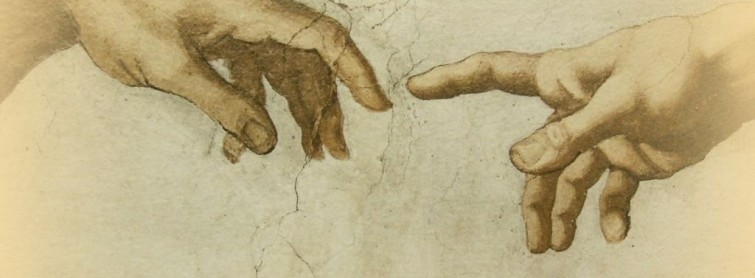Adam and Eve were living in the paradisal conditions of Eden for some time before they ate from the tree and were subsequently driven out of the garden…but how much time did they actually spend in the Garden of Eden?
We do have some biblical evidence which can help us to make estimated guesses at the timeframe of the couple’s Edenic life. While we have no way of concluding for sure exactly how long the two were there, there are several reasons to believe that they only resided within the utopian garden for a short time before the expulsion.
Creation Week
Genesis 1 describes the week where God created the world from nothing. The world is described as being brought into existence through the creation of the heavens and the earth, vegetation, animals and finally, humanity. After God’s creative work, he observed what he had made and declared it to be good, before taking the seventh day to rest from his work.
From this we can gauge two things;
Firstly, we can conclusively rule out Adam sinning on the sixth day, as God declared everything to be good. Secondly, we can also rule out the idea that Adam sinned on the seventh day, as God consecrated it as the Sabbath.
From this we can conclude that Adam could not have sinned between his creation and God’s sanctification of the Sabbath, ruling out creation week all together.
Adam’s Age and Progeny
Adam’s age can help us to gauge an upper limit on how long he and Eve might have spent in the garden.
Genesis 5:5 states that “Altogether, Adam lived a total of 930 years, and then he died.” We also know from Genesis 1:14 that the world was being measured in times, days and years by this point, so we can take this figure at its face value. From this we can conclude that no matter how long Adam and Eve were in the Garden, it could not have exceeded Adam’s lifespan of 930 years, since we know that Adam was expelled from the garden.
Further to this, we know that Adam and Eve had children outside of the garden. Genesis 4:25 says that Adam and Eve had their child, Seth, after Abel’s death. We know that this is post-Eden and we also know from Genesis 5:3 that Adam was 130 years old when Seth was born. The reference to Abel’s death also makes it clear that there was a significant time gap between the birth of Cain and Abel and the birth of Seth. Genesis 4:17 suggests that Cain was married at the time of his murder of Abel which would place him as a late teen or adult.
Since scripture makes it clear that Seth was born outside of the garden, after the events of Cain and Abel, when Cain was old enough to be married and working the land, we can conclude that Adam and Eve could not have been in the garden for more than 110-115 years, and certainly not more than 130!
Issues of Conception
Since we know that God created Adam and Eve with perfect bodies, free from health issues, some have suggested that this perfect state would have produced rather quick conceptions, free from the fertility issues that abound in the modern day. In the modern world, we know that healthy fertile women have an 85% chance of becoming pregnant within a year. A perfectly formed women, without the complications of the modern world would probably get pregnant much quicker than this, but we can at least conclude that the chances of their Edenic residence was not likely more than a year.
We also know from Genesis 1:28 that shortly after their creation they were commanded to “Be fruitful, and multiply, and replenish the earth”. This suggests that the pair would have begun actively trying to reproduce immediately, and thus cannot have resided in paradise for very long, as the conception and birth of a child produced from Adam and Eve is not described until after the expulsion in Genesis 4:1.
Based on this evidence, we can speculate that if the couple spent more than a year in the garden between their creation and the fall, Eve would have conceived, or even given birth to children before being deceived and expelled. We cannot say for certain that there were no children present at the fall, whether in-utero or running around beneath the tree in question, but it seems unlikely given the complete silence regarding children until the fall, and the sudden appearance of them after the expulsion. The only conceptions or births recorded are described outside of Eden, which can only lead us to believe that Adam and Eve were not in the Garden of Eden long enough to have had children or even conceived any.
The Serpent
The last piece of biblical evidence we have to support a short-stay in Eden is that of the serpent from Genesis 3.
Based on the evidence elsewhere in the bible of the way that the ‘serpent’ works, it seems unlikely that he would waste time before seizing his opportunity. In Matthew 4, Jesus was only in the wilderness ‘forty days and forty nights’ before ‘the tempter’ came to undermine God’s authority once more. Another example is Job 1 where Satan is commissioned to interfere with the life of Job, and goes immediately to take up this position.
The ‘tempter’ would know that timing is everything. The longer he waited to strike with Adam and Eve, the more devoted and obedient the pair would be to God, since his presence in the garden and his relationship to the pair was very close and tangible.
Satan would have made no hesitation to set about undermining the relationship between Adam and Eve as early as possible, further reinforcing the theory that Adam and Eve did not live in Eden for very long before eating from the tree and being driven out.
To honour God’s creation, be sure to sign the petition to establish Creation Day as an official holiday!




